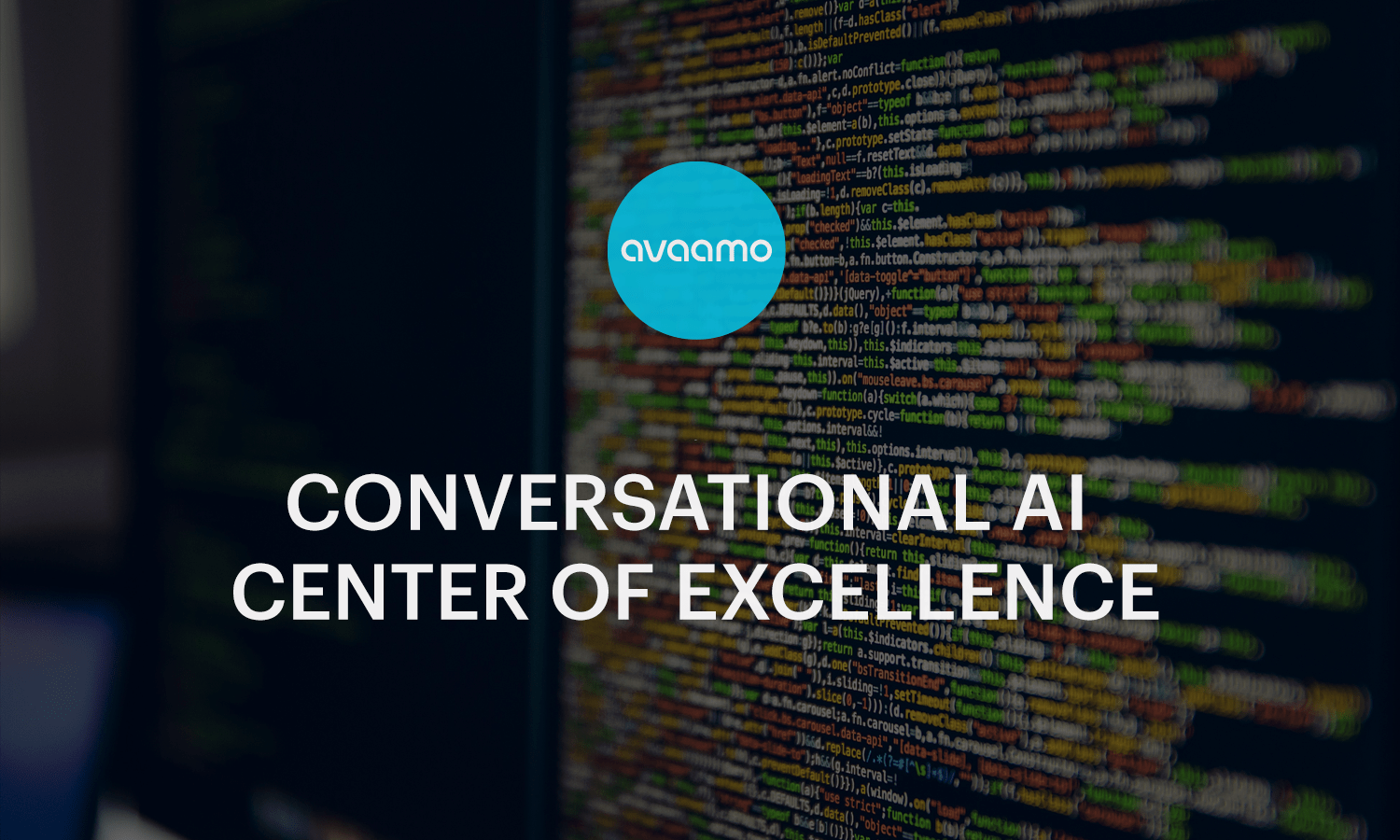
23 Oct 3 Best Practices for Establishing a Conversational AI Center of Excellence (CoE)
Companies are beginning to see conversational AI as a broad based platform to be applied across customers, employees, and suppliers to increase automation in the enterprise. Deploying conversational AI technology requires the following: Establishing a Center of Excellence (CoE) goes a long way in driving consistency and best practices across multiple phases of deployment, as well as leveraging synergies when expanding across departments or geographies.
- Clear business goals
- Technology competency
- Business competency to select workflows for automation
- Setting up processes for continuous improvement
It is a critical piece of the puzzle to make sure that the technology delivers consistently measurable benefits. Here are some of the best practices to consider when embarking on a conversational AI journey.
1. Assemble a team with both business & technical skills
With the project scope in place and an understanding of relevant goals across the board, it is time to put together the team that will manage the IVA deployment and eventually scale the project. There are a few different resourcing strategies that the enterprise can utilize to bring the team together.
Irrespective of the resourcing strategy, long term success requires a judicious mix of technical and business skills. Here are the roles to consider when staffing your Center of Excellence:
Executive Sponsor
The executive sponsor ensures that the project’s goals are aligned with the overall business strategy. Having a single, cross functional executive sponsor who has oversight over multiple projects, and can constantly assess strategy, deployment, and execution success is a must.
Product Owner or Product Manager
Conversational AI success frequently depends on the user experience. The project should be viewed as a ‘product’, and thus the product owner is more important than a project owner. The product owner should view this as a product management function that manages the initial beta release, and then monitor user interaction to constantly fine tune the solution, incrementally adding features that will be of value to the user.
Development Manager or Product Manager
The project manager, who is a development professional with hands-on knowledge of the chosen technology partner’s product, leads each phase of the development cycle. This function is often managed by the technology partner’s delivery team for the first few projects, and then as internal competency is built up, it moves over to an employee resource.
Subject Matter Experts (SME)
Domain experts need to be especially critical in the early phases of the project. They define the initial workflow, look at aggregation of domain-specific training data for the machine learning engine, and monitor the response of the IVA to domain specific questions. The SME is a non IT person who needs to have a holistic view of the outcome across multiple disciplines relevant to the workflow.
Development & testing teams
This is the core development team and is either trained in conversational technology or is provided by the technology or systems integration partner. This team builds out the IVA, various integrations, and the conversational experience.
Security & compliance teams
The security team should be consulted periodically during development to ensure that existing protocols and compliance are adhered to, and are consistent with company policies and procedures.
2. Market the solution to aid user adoption
A development oriented team may think of “Go live” as completion, however, this is just the culmination of the development process and not the rollout. The CoE team which is responsible for the overall success of the implementation needs to think differently. Marketing the solution to its potential end users and informing them of its advantages is often under emphasized by technical development teams. The multidisciplinary CoE has a distinct advantage by its very nature in managing and communicating the value of the IVA. In many cases, going live with an IVA is a perfect opportunity to share the company’s broader vision and dedication to optimizing value. Therefore, a well executed communications roll out by the CoE is key in ensuring that the implementation is successful.
3. Monitor and measure to optimize continuously
The intelligent virtual assistant, in its first few weeks, is like a new employee. It has the requisite workflows and training data, and is primed to answer and help users, BUT it’s still learning! Human users are unpredictable and the IVA needs to learn nuances and utterances that will help it improve steadily. It is important to have the SMEs continuously review unhandled queries, and tweak the IVA to get better results. This is an important step for the IVA in learning to perform well.
Usually this continuous training is required for the first four weeks, but can be reduced to less frequent intervals as the machine learning algorithm and AI models learn and achieve “steady state”. The IVA matures like a high performing employee getting better at their job everyday.
Leveraging your conversational AI investment
The key to leveraging your conversational AI investment is to ensure that the Center of Excellence drives consistency from project inception to execution – and long afterwards. The team must capture benchmarks that can demonstrate value, record success, conduct user surveys, and then incorporate these benchmarks into regular communication campaigns to various stakeholders. This will ensure that engagement continues to increase as the CoE evolves and grows to support the overall conversational automation strategy.


